2000.03.28
Re: Osmosis /Electromagnatism /(An)Architecture
The definition of osmosis you supplied is indeed the first definition of osmosis, but there are several others:
a process of absorption, interaction, or diffusion suggestive of the flow of osmotic action: as an interaction or interchange (as of cultural groups of traits) by mutual penetration esp. through a separating medium : a usually effortless often unconscious absorption or assimilation (as of ideas or influences) by seemingly general permeation<
br>
These subsequent definitions of osmosis relate rather well to architecture, as I've already mentioned, particularly to the architectural notions of transition from outside to inside and vice versa. I see the Pantheon in Rome and Kahn's Kimbell Art Museum as extremely fine examples of osmotic architecture. Furthermore, the Pantheon and the Kimbell are also extremely fine examples of electromagnetic architecture because they are both consummate examples of an architecture of light (i.e., electromagnetic radiation).
I am not here proposing that the above interpretations are the only correct interpretations of these buildings and the definitions under discussion, but I'm rather making connections between corporal physiological processes and architectures that for the most part haven't been made before.
2000.04.07 13:33
Re: AAD/contemporary sciences
...have you ever considered the fact that most of what we see in the sky at night really doesn't even exist at this particular moment anymore?
For example, when astronomers recently discovered planets around a star 40 light years away from Earth, the real truth is that they discovered planets that existed 40 years ago. Granted, chances are that those planets (if that's what was really found) exist right now as well, but we on Earth really won't be certain of that until 40 years from now.
2000.04.07 13:43
Re: GGBW/a saine house
...'theming' (theme-ing), the same thing that casino, hotel, resort, and mechandizing designers do all the time.
Theming is not the same thing as reenactment, but there is definitely a relation between the two.
2000.08.04 22:49
Re: Alex Galloway, Rhizome Editor, Reports on Siggraph 2000
Galloway wrote:
Most of the activity at last week's SIGGRAPH 2000, held this year in New Orleans, boiled down to a single fetish: the search for the perfect simulation.
reply:
Albeit a minority viewpoint, I nonetheless believe that "virtual reality" would more fulfill its potential by offering something other than a "perfect simulation" of what already exists. For example, "virtual reality" could possibly let us experience what a completely abstract reality is like, or perhaps what a completely inside-out reality is like -- basically allowing us to experience some "other" realities.
Then again, cloning will be a big part of this millennium, so cloned realities might just be the norm as well.
| |
2000.10.06 15:30
Re: architectural photography
I think architectural photography is extremely valuable when the architecture in photographs no longer exists but in photographs.
Just over three years ago I went to photograph Venturi & Rauch's big BASCO 'sign' building. The building was then derelict, and I took many 'unflattering' snapshots, e.g., lots of empty beer bottles and a plump vinyl lounge chair providing an interesting domestic tableau just behind the big 'A'. Alas the film did not develop at all, and hence no photographic record and just a memory for me. Almost exactly a year later I returned to BASCO to take pictures again, however, the big letters were that time completely gone. I turned out to be the person informing Venturi's office of the loss.
The point is that 1) many buildings today change radically in short periods of time, therefore ALL photographic records (not just the flattering ones) are important items in understanding the 'life' of architecture most fully, and 2) a photograph of a building that once was but is no more is perhaps the easiest form of virtual architecture invented thus far.
ps
...I add that architectural imagery (photography, photocopy, digital records, etc.) today is very cheap, meaning the notion of capturing a building in the perfect 'light' is nothing more that creating a fetish, an ideal that is forever virtual and definitely not real. You might say that more than anything architectural photographs have patently deceived many viewers (architects/critics) into believing the photograph is the reality.
2000.10.22 14:47
Re: AR:Evo Model (brown 2)
Is the more aesthetic problem, perhaps, the ongoing (generational?) process of institutionalize evasion itself? And hasn't the 20th century already well proven that humanity's artists now overwhelming treats art via what it COULD be rather than what it SHOULD be? And just maybe the biggest problem for architecture (and architectural aesthetics) today is its struggle making the methodological/critical shift from what should be architecture to what could be architecture.
2000.11.02
[a] vanguardist reports 2001
The troops who march at the head of an army.
The leaders of thought, taste, or opinion in a field (as art, letters, or politics).
Hence, one who or that which is foremost.
Those who create, produce, or apply new, original, or experimental ideas, designs, and techniques in any field, especially in the arts.
A group (as of writers or artists) that is unorthodox and untraditional in its approach.
The predilection for or practice of intellectual or artistic experimentation.
2000.11.03
"I'm three dimensional."
In the romantic, classic movie TWO FOR THE ROAD (1968), Albert Finney portrays Mark, a young American architect that ultimately becomes a European jet-setting architect (that's his very smart Mercedes coupe being driven into the back of an aircraft in one of the opening scenes).
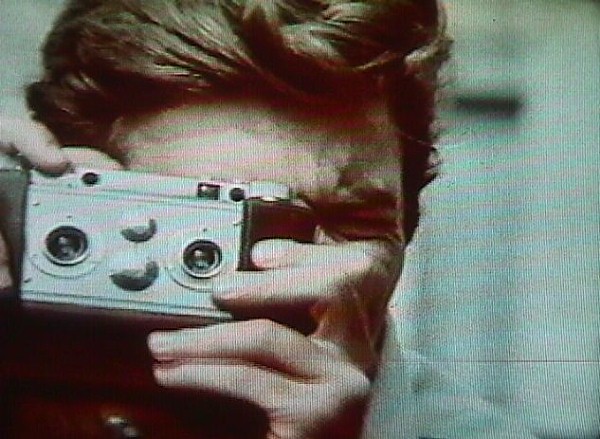
As a recent graduate architect, Mark hitch-hikes through France taking 3-d pictures of buildings; that's when he meets Joanna, played by Audrey Hepburn. As the pair are still just getting to know each other, Joanna asked Mark to take a picture of her instead of the local Cathedral. Mark says his camera is made for taking pictures of 3-dimensional objects like buildings. To which Joanna in beautiful irony replies, "I'm three dimensional."
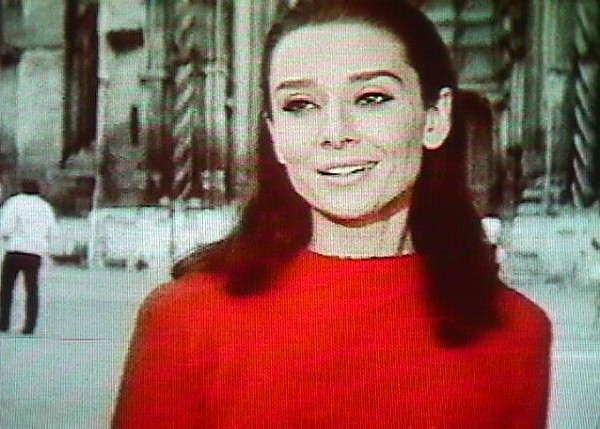
the architect's wife style .0
Going through my collection of digital clips from TWO FOR THE ROAD inspired me to (soon) install a mini exhibit at www.quondam.com entitled "the architect's wife style". As Joanna, Audrey Hepburn wears an assortment of very MOD fashion (designs). Normally, modernism and romanticism (in design) are anathama, but not in TWO FOR THE ROAD. If any movie can be labeled "romantic modern collage", it's TWO FOR THE ROAD (and you'll see what I mean if you watch the whole movie through to the end).
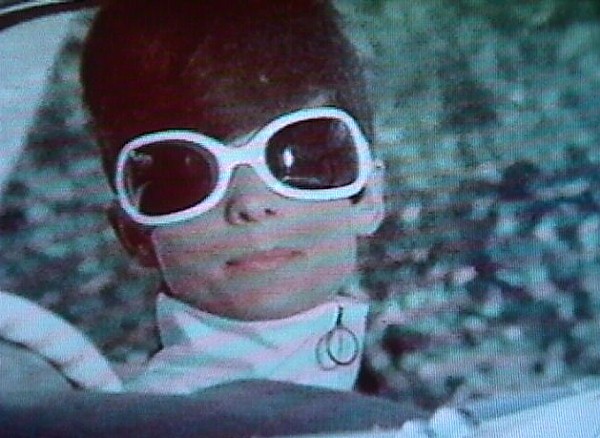
the architect's wife style .1
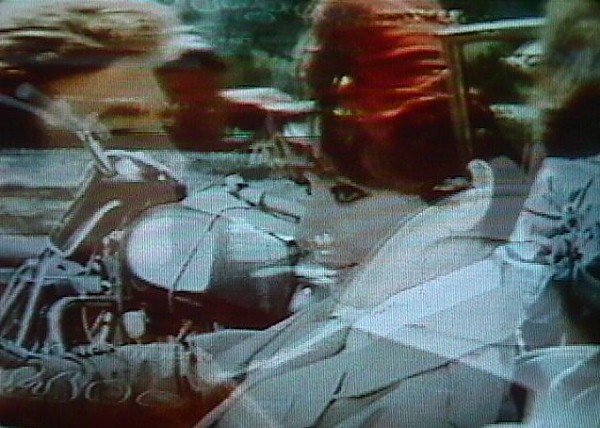
The collage begins innocently enough with young architect and future architect's wife casually clad in the proto-manifestations of GAP ensembles of every fourth season or so.
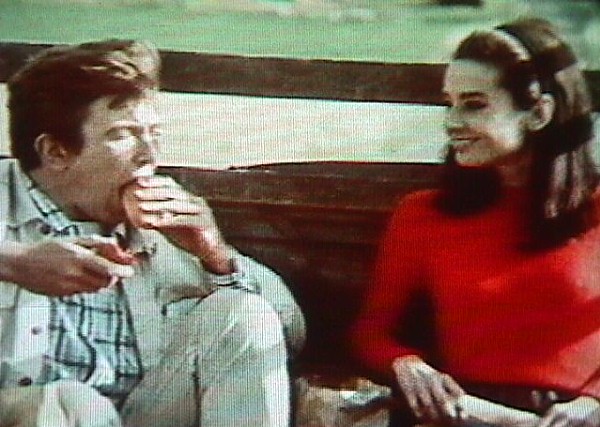
With all the success and luxury of being zoomed fast forward into the jet set, however, the trappings of fashion and style really only become accessories within a double theater of love and hate.
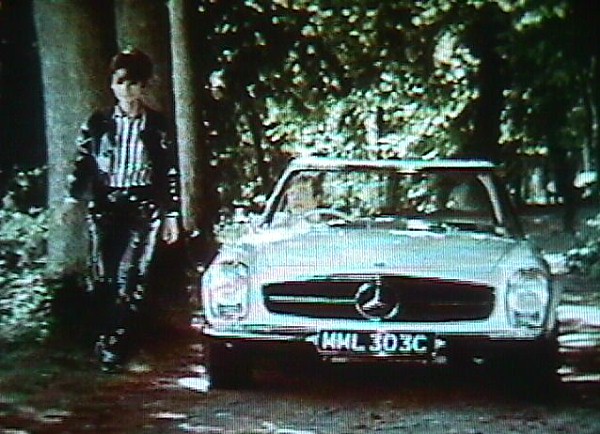
the architect's wife style .2
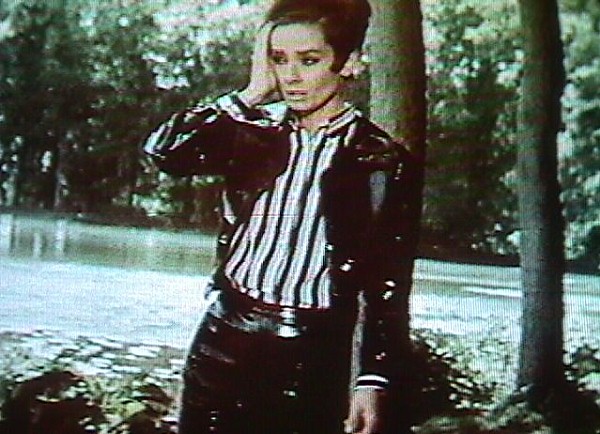
"Clearly, everything is NOT ok in this marriage. More and more, all Mark talks about is 'spatial this' and 'spatial that'. I sometimes wish I was in outer space."
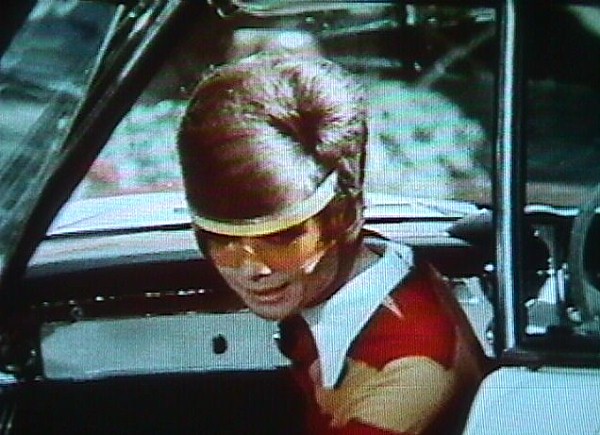
"That's it! I'll survive all this pretentious "spatiality" with my own expression of space alienation."
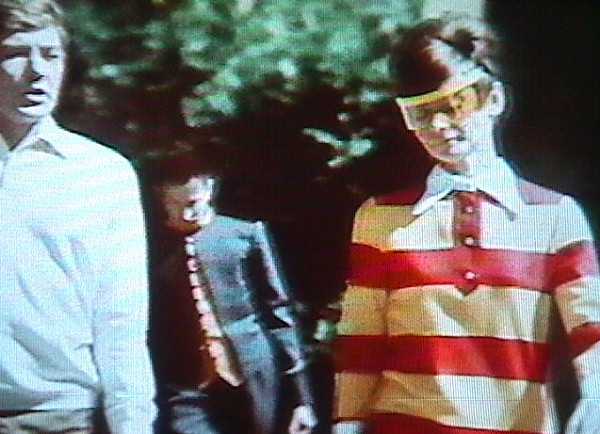
the architect's wife style .3

That alien look works well. It is certainly the ability to easily morph that is the most attractive.
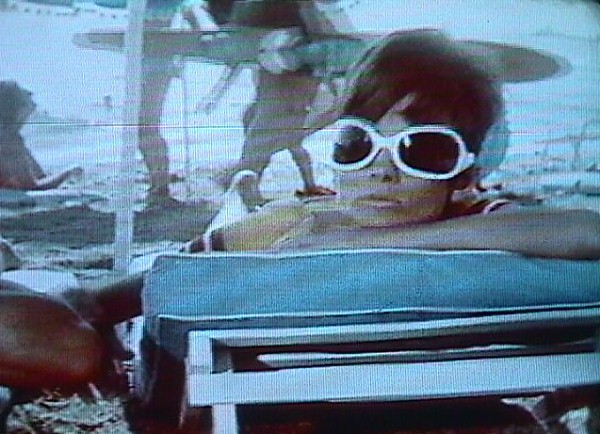
"I wonder what Mark meant when he said I was his topological inspiration."
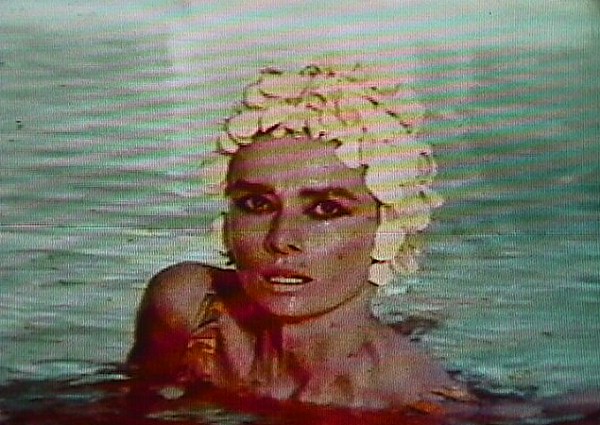
the architect's wife style .4
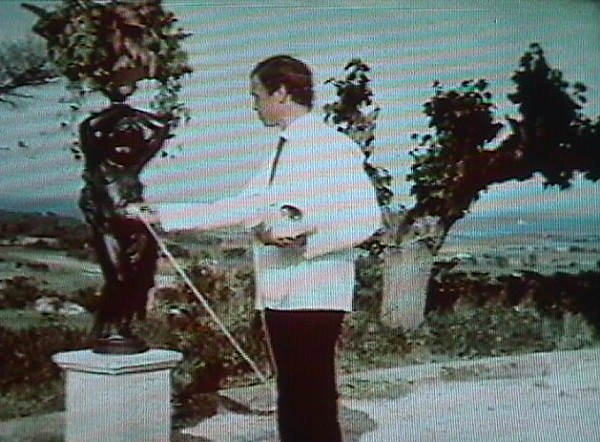
Classic camp interlude: the statue's umbilicus becomes the plug for a telephone cord. Symbolic connection is symbolic communication is symbolic connection.
the architect's wife style .5

"But isn't simple elegance what's most becoming? Isn't that the best style? Yet here I am about to sleep with a man that's not my husband. I guess that's stylish too. Maybe it is true that reality now reenacts its own illusory mirror."
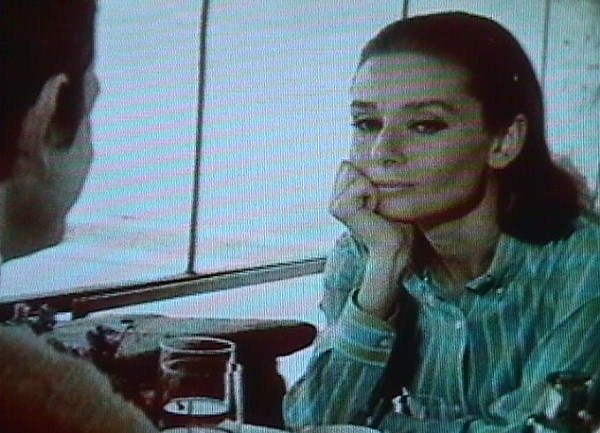
the architect's wife style .6
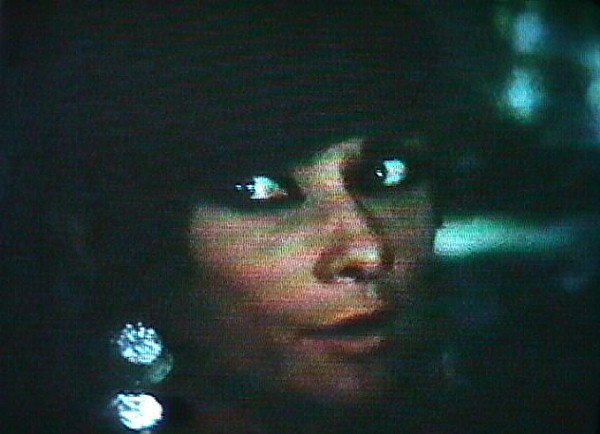
So let the show begin.
Lights! Camera! Action!
...the architect's wife style .7

"I am iconic."
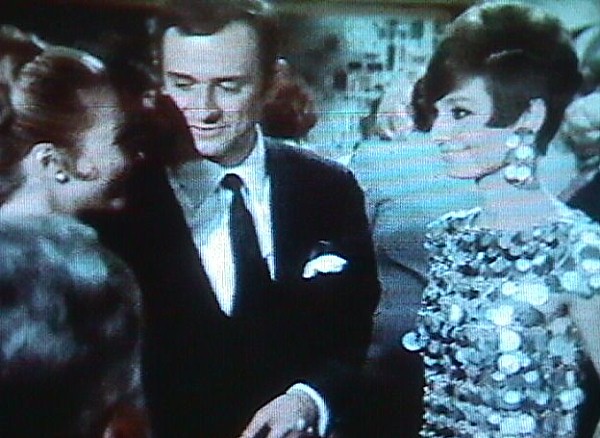
"I am electronic."
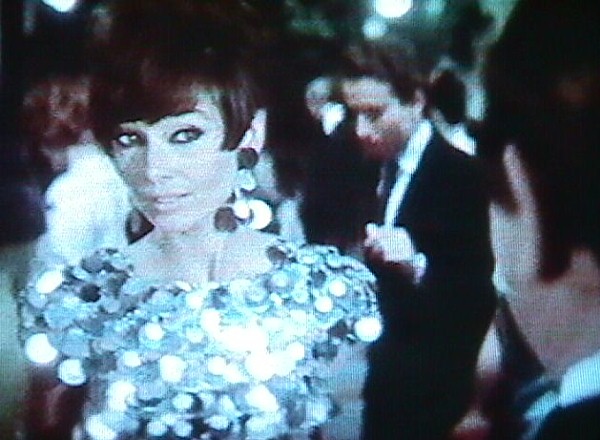
"I am beyond surface."
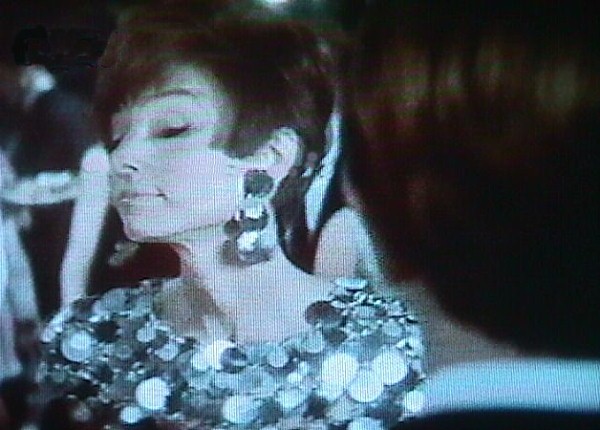
the architect's wife style .8
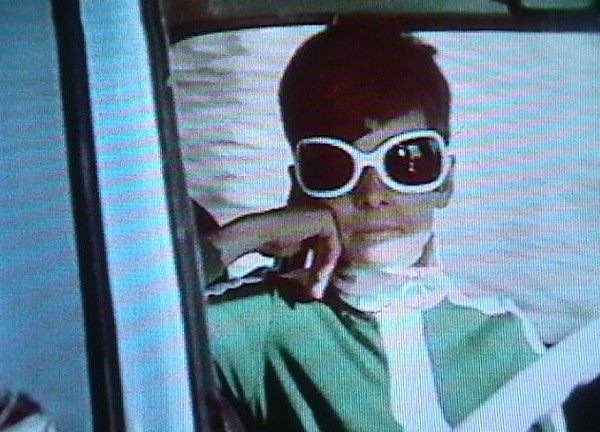
"So, does Mark ever really understand me? Does he get the message?"
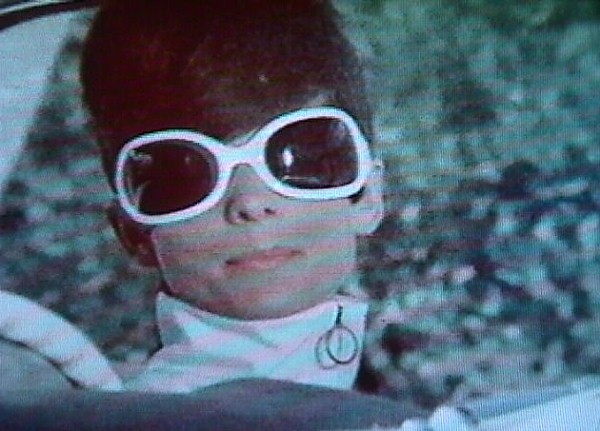
"I love you. Let's go shopping."
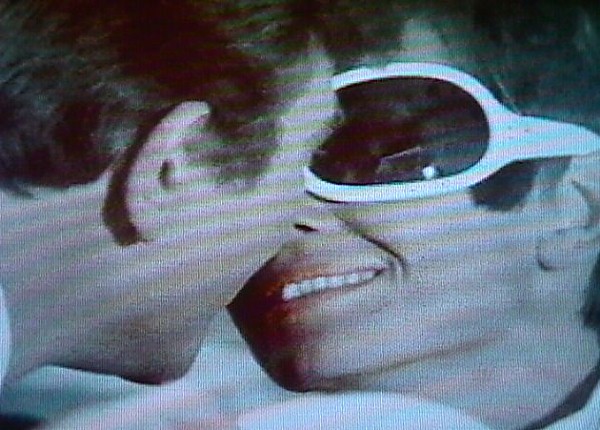
| |
2000.11.07 10:20
Re: two for the road
I like what you say about not recalling "another film that, structurally, collages space and time in that particular way." Two for the Road does indeed collage space and time, but I was never sure how unique its particular method of cinematically doing so might be. In any case, it's worth noting that the collage here very effectively relates a narrative, specifically a 'modern' life narrative. Is the film's "collage of space and time" a (romantic) reflection (i.e., mirror) of modern life itself?
Could it be that the age old narrative journey motif's (Homeric epic) modern replacement is the narrative 'vehicle' motif?
2000.11.07
Intuition?
Paul wrote:
How does evolution work? My understanding is that it requires a mutant, an individual who diverges from the norm, who may adapt more advantageously to conditions and producing progeny with new characteristics. This is evolutionary change. The system doesn't mutate. It is INDIVIDUALS who are mutants.
Steve adds:
This is very interesting, and I like the conciseness. Germane to the ('beginnings' of) the Baroque, it makes me think of Martin Luther as very much a mutant/mutinous Roman Catholic. Besides his 95 theses, Luther also thereafter translated the New Testament and then the Old Testament into German for the first time--the Bible linguistically mutated, if you will.
2000.11.11
more vehicles than roads?
In M's last post on Two for the Road he wrote, "Most of Wim Wenders' works are 'road films' as well." The only Wenders film I've seen is Wings of Desire, so I'll briefly get back to that film after I make a distinction between 'road films' and films, like Two for the Road and Spetters, where vehicles are more potent message delivers than are the roads the vehicles travel on.
In Two for the Road we see Mark and Joanna crisscrossing the French countryside in an extensive sequence and array of cars, culminating with the Mercedes coupe. Each car corresponds to a different period of time within Mark and Joanna's relationship, and indeed each (style of) car carries its own symbolic message vis-à-vis the different phases of Mark and Joanna's life together (the station wagon with the proto-yuppie couple/friends and the couple's bratty daughter is classic modern social commentary). Automobiles are not the only vehicles employed in the movie, however. For example, the movie opens with the Mercedes being driven into the back of an aircraft, and it is another (privately owned) airplane that transports Joanna to her one marital infidelity. Plus there is the great scene where the young and still unmarried Mark and Joanna wake up with utter surprise to find themselves 'touring' the French countryside from within a huge concrete sewer pipe truckin' its way to some construction site (and keep an eye out for that bulldozer on the 'developing' beach).
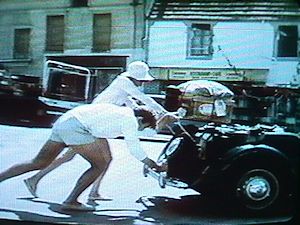 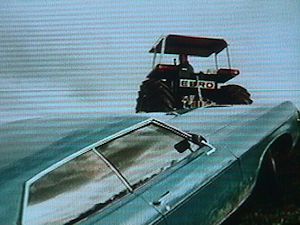
Verhoeven's Spetters (which I first saw in 1984 and again on tape in 1986) is about three Dutch teenage boys that are somewhat local sports hero's from the town's motorcycle racing team. This movie is a nimiety (i.e., an abundance of redundance) of all kinds of vehicles. The lad who is the best racer has a
bad motorcycling accident, winds up in a wheelchair (going from two wheels to four wheels), and ultimately commits suicide by rolling himself onto a highway where he is quickly run over by a very fast moving truck. Then there is the 'puritanical' farmer father of one of the boys that chases his son on the edge of a field while he, the father, is driving an enormous tractor. The boy is experiencing his father's wrath because the son has been associating with the local "whore of Babylon." The "whore" lives in and runs a luncheon business out of a camper hitched to the back of her car (which, if memory serves me correctly, is something like a 1970s Chevy Impala). The most popular item on the luncheon menu is extra long hot-dogs. [The actress who plays the "whore" is the same actress who in Verhoeven's The Fourth man performs something just above castration in one of the neurotic dreams of 'the fourth man'.]
What I like about these movies is how vehicles are both very literal and very symbolic, and, moreover, it is the seamless transition from literalness to symbolism that the vehicles deliver.
So, doesn't the title Wings of Desire say it all for itself? Angel wings as the vehicle that might just deliver us to our most lofty desires.
2000.11.13
memories of desire?
I wanted to rent Paris, Texas, but it was out, so I rented Spetters and Ulysses' Gaze.
In watching Spetters (14 years since I last did so) I have to report the mistakes I made in my last post about that film. What's funny is the types of mistakes my memory made.
The boys are all 20 years old, (not teenagers). The farmer father does not chase his son on a tractor, rather pulls the "whore of Babylon's" Chevy Impala (I was right about that) out of a roadside ditch that the farmer's son stupidly backed into. The 'puritanical', farmer father does routinely beat his son, however (and the son has a definite sado-masochistic streak to him -- he gets himself 'coiled up' in the 'sub-plot' within the under-construction subway).
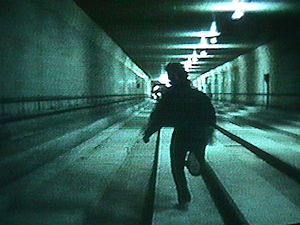 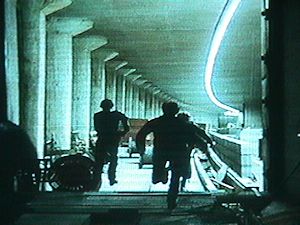
Only two of the boys are amateur racers, while the farmer's son is an auto mechanic at the gas station.
And here's my favorite memory mistake: it is not extra long hot-dogs that are the most popular item at the "whore's" luncheon business, rather it is 'croquettes' (or something spelled like that) which, unknown to the customers, are made of canned dog food. [Obviously serving the question, "is real fast food actually any better?"]
Overall, I was correct that Spetters is a nimiety of vehicles. It's like Two for the Road on multiple steroids.
After now being well re-acquainted with both films, what's really interesting is the difference the 1970s made. The change in 'style' from Two for the Road (1967) to Spetters (1980) is very noticeable, and the fact that both films are 'vehicular' heightens the changes. There is one very weird coincidence between the two films, however. The station wagon in Spetters is also driven by a family (husband, wife, a boy and a girl), and the hero of the film has his paralyzing motorcycle accident because the husband in the station wagon throws a bag of orange peels out the car window while he's driving. Perhaps it really isn't odd that the station wagon and the nuclear family come to represent conformity in both films, but they also come to represent the 'death' of the free (wheeling) spirit.
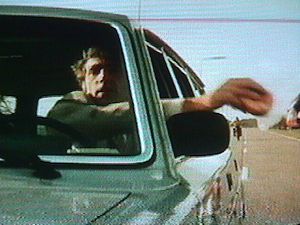 
Alas, I finished watching Spetters and then began to watch Ulysses' Gaze (which I've never seen before but have the soundtrack of for two years now), and the pace went from 75 MPH to 5 MPH. I haven't finished watching the film yet, but it looks like one might be able to analyze the 'vehicles' in it as
well. But it won't surprise me if the notion of "film" itself turns out to be Ulysses' Gaze's primary vehicle.
2000.12.15
the stillness of Ulysses' gaze
"First God created the journey, then there is doubt, and then comes nostalgia."
2000.11.18
vehicles of symbolism?
Since beginning this "vehicle" film thread, it has dawned on me that when "vehicles [in films] are both very literal and very symbolic, and, moreover, it is the seamless transition from literalness to symbolism that the vehicles deliver," that this phenomenon is much akin to the notion of the medium simultaneously being the message.
|